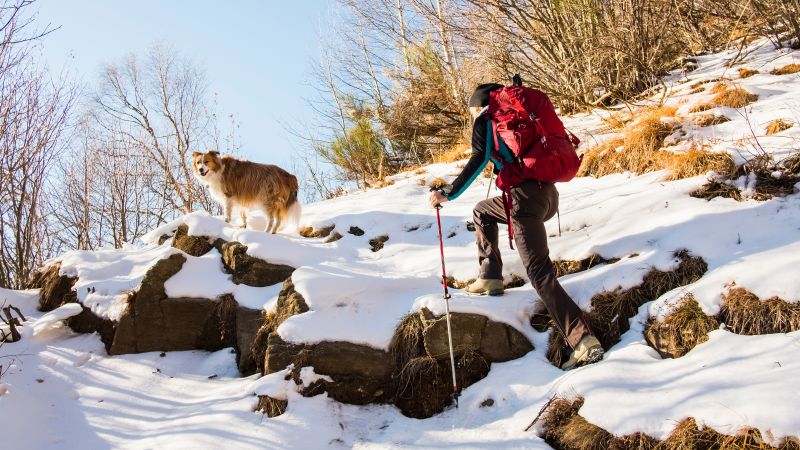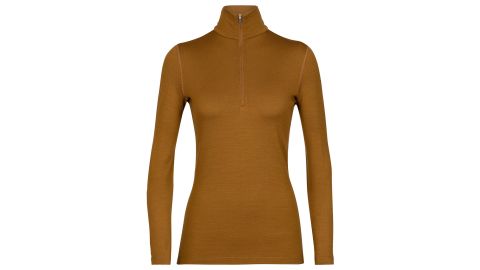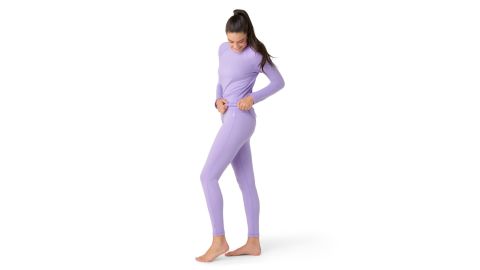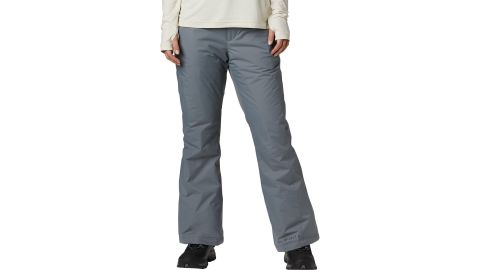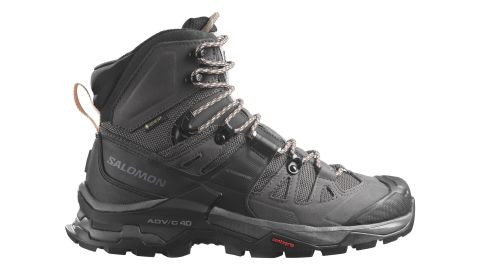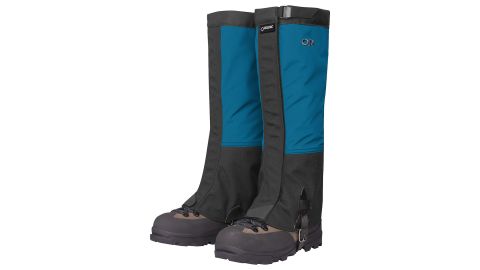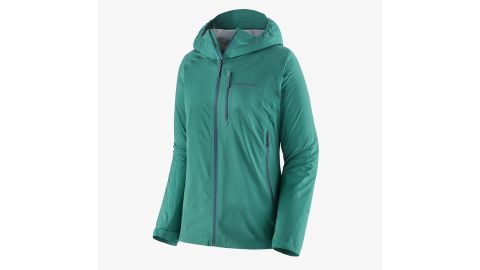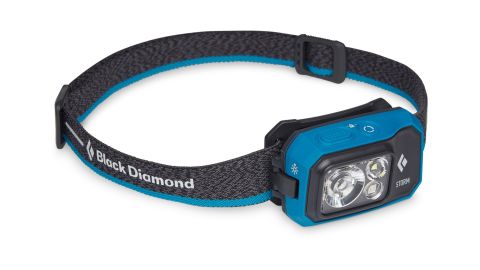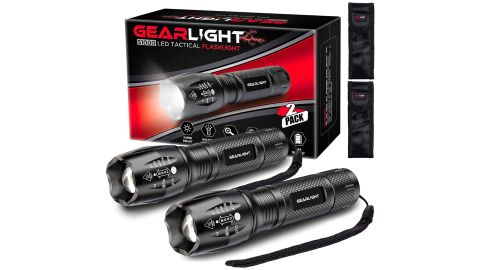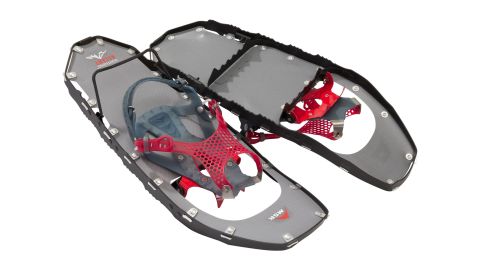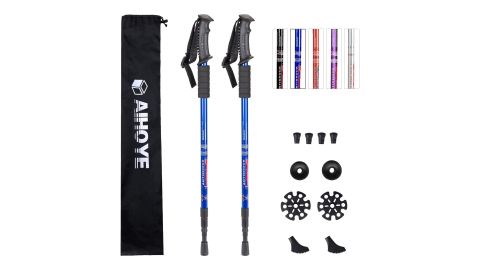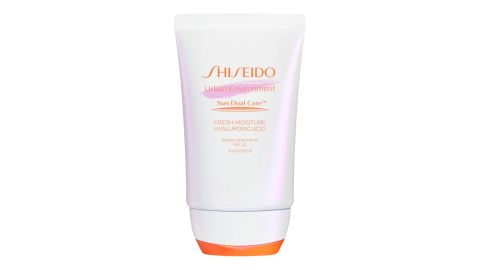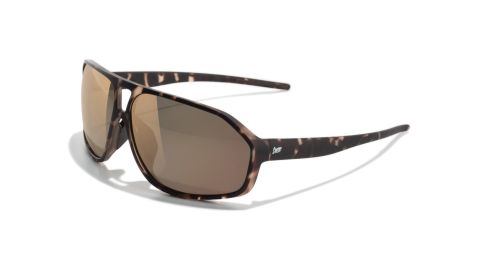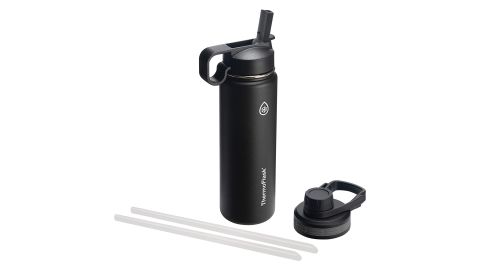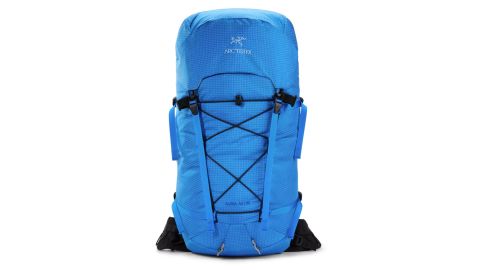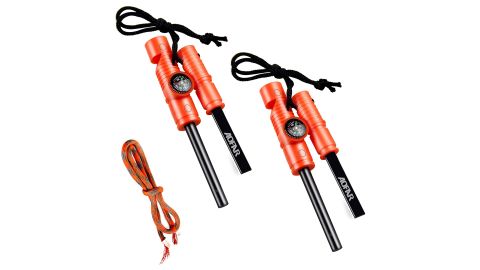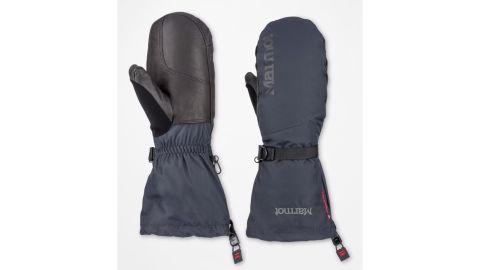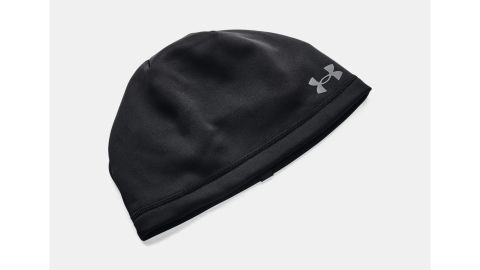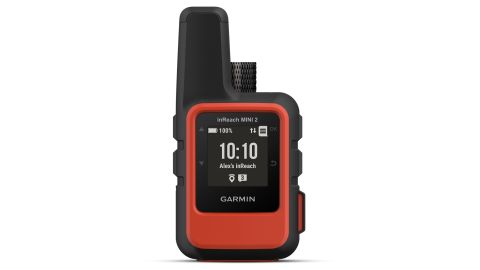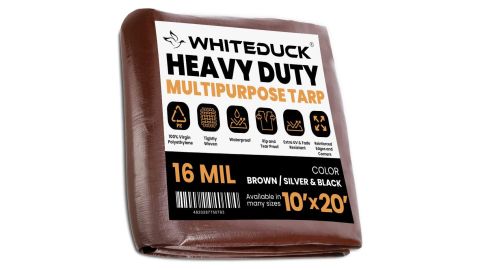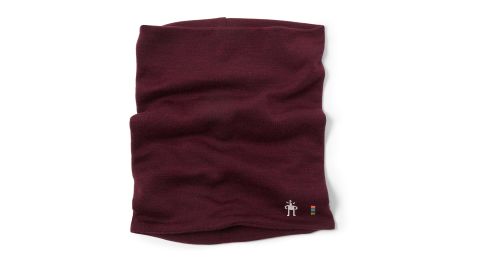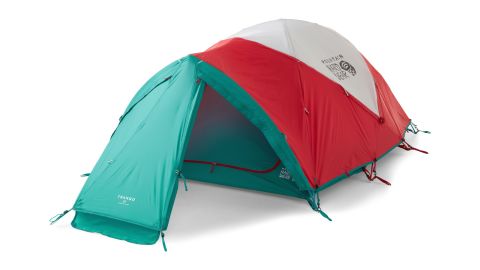Whether you’re a seasoned hiker or looking to dip your toes into the winter sport for the first time, there’s lots to consider before setting foot on the trail during the cold months. Whereas summer hikes may feel more like a (sweaty) walk in the park, winter hikes present a unique set of challenges, according to Cris Hazzard, a professional hiking guide and creator of HikingGuy.com.
“The biggest misconception is that if you did a hike in the summer, doing it in the winter is the same, just with some extra layers and better foot traction,” he says. “When you hike in the mountains in the winter, what was once simply a walk on dirt and rocks can now become a mountaineering exercise. The thousands of pounds of snow and ice add a dramatically higher risk to what once was a nice walk in the woods.” Regardless of your knowledge of the local topography, weather and snowfall, he says there’s always a risk of exposure to dangerous elements, avalanches and falling.
How much you choose to take on your winter hike depends on the length of the trip, your elevation, the weather and the riskiness or difficulty level of the trip, according to Jordy Shepherd, a mountain guide with the International Federation of Mountain Guides Associations, vice president of the Association of Canadian Mountain Guides, and co-host of the Delivering Adventure podcast. “For short day trips in urban areas, you should always bring the basics. However, on longer trips in more remote settings and in more serious weather, you really should be prepared for the worst-case scenario.”
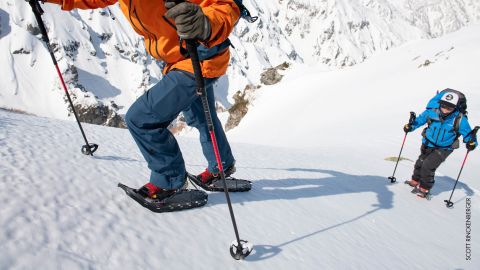
If this all sounds a little daunting, know that the benefits of winter hiking generally outweigh the downfalls. “Yes, hiking is often associated with strenuous and fatiguing activity,” says Dr. Haley Perlus, a peak performance coach with a Ph.D. in sport and exercise psychology. “However, winter hiking with snow provides more cushion for your body and is a great way to build your fitness without the same soreness as on-season hiking.” She adds that the combination of sun exposure, vitamin D and physical activity can help alleviate seasonal depression while boosting your immune system in the thick of flu season. And while most folks assume they need a whole new wardrobe to begin winter hiking, Wesley Trimble, communications and creative director at the American Hiking Society, says you likely have many of the essentials already on hand.
Ready to hit the trails but not sure what to pack? Here, all the winter hiking gear to help your trek go off without a hitch.
Experts suggest staying away from cotton since it tends to suck heat away from the body when it gets wet. Instead, Shepherd, Perlus and Trimble suggest opting for wool or synthetic base layers for ultimate insulation. This top-rated Icebreaker long sleeve is made of soft and breathable merino wool jersey fabric, features a half-zip for easy thermoregulation and contains gusseted underarms for wider range of motion.
It can be tempting to throw on a single pair of thick pants and call it a day, but your legs will thank you if you treat them to a breathable yet insulating baselayer. This option from Smartwool is made of the brand’s warmest-weight, moisture-wicking, butter-soft merino wool and features flatlock seams for extra comfort.
Snow pants are your best defense when it comes to keeping your lower extremities warm and dry. This pair from Columbia does just that with its waterproof shell, temperature-regulating and insulated nylon material, and inner leg gaiter to keep snow and debris out of your boots. It features an adjustable waistband and zippered pockets to keep your belongings safe.
For colder and wetter conditions, Trimble encourages winter hikers to invest in waterproof footwear. “Some individuals may be able to use a thicker pair of socks in their regular hiking boots, but in many cases, thicker warmer wool or synthetic socks will impact the fit. In these cases, roomier or insulated boots play a crucial role in keeping feet happy in cooler temperatures.”
Not sure where to start? Hazzard suggests “a high-cuff Gore-Tex trail runner with gaiters. The waterproofing on the boot helps to keep your foot dry and warm.” These fan-favorites from Salomon aren’t a far cry from your typical trail shoes in that they’ll still allow for natural foot flexion and ankle articulation despite their mid-calf height. Their Gore-Tex waterproof membrane makes them suitable for inclement weather and provides plenty of traction in icy conditions.
What good are your boots if you’re kicking snow, water and debris into them? That’s where gaiters come in, which our experts recommend across the board for an extra layer of warmth and protection. This award-winning model from Outdoor Research has a waterproof Gore-Tex upper and abrasion-proof Cordura elements to withstand the test of the trails. Note that the brand suggests sizing down for a proper snug fit.
Instead of investing in a new thick and heavy parka, Trimble says it’s more economical to supplement what layers you may already have for warm-weather hiking, like an outer shell to ward against wind and precipitation. This top-rated option from Patagonia is perfectly packable, and holds up against the elements with its recycled nylon ripstop fabric. It features a storm flap, zipper garage and single-pull drawcords, which all work to keep you feeling cozy in crisp conditions.
If you need additional insulation layers, Trimble says it’s crucial to size up to fit over other layers. “For example, if someone typically wears an XL down jacket, they will likely need a size 2XL outer shell to fit over [it] without compromising the loft of the insulation,” he says.
“The slower pace of winter hiking sometimes means that hikers can get caught out after dark when temperatures plunge,” says Hazzard. Be prepared while going hands-free with this highly-rated headlamp that can run on standard batteries or rechargeable lithium-ion batteries. It’s designed to be waterproof for up to 30 minutes while submerged in one meter of water, and comes with numerous brightness and beam levels to conform to your setting. To optimize your safety, Shephard also suggests bringing spare batteries.
A flashlight might come in handy if you want to manually control the way you illuminate low-light areas (without, you know, feeling like a bobblehead). This uber-popular LED flashlight two-pack with 70,000 reviews is popular with hiking pros for its military-grade aluminum material, ability to withstand 10-foot drops (which you won’t have to experience IRL thanks to its convenient hand straps), tactical power switch that’s easy to locate in the dark and your choice of pinpoint or wide angle illumination.
Shepherd says snowshoes can serve as a serious hiking essential in deeper snow since they help prevent you from sinking. REI’s bestselling option is the MSR Lightning Ascent Snowshoes, which feature freeze-proof bindings and toe stops that keep your foot aligned. Their 360-degree traction crampon frames provide control and grip in icy conditions, and they feature an anti-fatigue ergonomic design ideal for steep uphill terrain.
Because poles provide additional points of contact with the ground, they increase your balance and overall traction in snow and icy conditions, explains Trimble. Grab this practical pair made of lightweight, military-grade aluminum that’s retractable from 52 to 25 inches. It features an ergonomic foam grip to reduce fatigue, and comes with 10 interchangeable tips, from rubber tips to maintain traction and avoid scarring rocks on flat land, to snow and mud baskets to help you navigate unpredictable terrain.
A common myth is that you don’t need to wear sunscreen during winter hikes, but Perlus explains why this is unequivocally false. “Technically, the Earth is closer to the sun during the winter days even though you may not feel the effects of the sun on your skin,” she says. “Plus, because the snow is more reflective, the sun will reflect off the snow and back onto you.”
Put your best face forward with Shiseido’s luxurious sunscreen that protects against harmful rays and pollution and repels moisture for up to 40 minutes in snowy and rainy conditions. Its moisturizing hyaluronic acid provides 12 hours of hydration so your skin stays safe — and supple — in the cold.
Thanks to the blaring sun, Perlus also suggests a durable pair of sunglasses for all winter hikes. This popular pair from Sunski extends towards the temples, offering extra coverage. Their polarized lenses with complete UV protection help eliminate glare in the sun or against the snow, leading to better visibility. Their rubberized nose bridge enables them to stay put in wet or sweaty conditions, and they use lightweight recycled scrap plastic materials that feel weightless on your face.
Shepherd says many water sources may be frozen or inaccessible during your winter hike due to being covered in ice. “Because of this, it’s important to take enough water for day trips unless you know that there will be accessible water sources,” he says. He suggests an insulated thermos to prevent the water from freezing, and avoiding hydration systems with a hose that can easily freeze in the winter, which render them useless.
This double-insulated, stainless steel, 24-ounce Thermoflask is said to keep drinks cold for 24 hours and warm for 12 hours. It comes with two leak-proof lids — a wider mouth “chug” lid and a straw lid for better accuracy. Thanks to its narrow width, it’ll fit seamlessly in any drink holder in your backpack.
A backpack that’s at once lightweight yet roomy enough for your essentials is the foundation of any successful winter hike. Shepherd says it should contain enough room for your extra layers like a synthetic or down jacket, a soft-shell jacket or sweater — and that’s exactly what you’ll be able to do with this practical and popular Arc’teryx 35-liter backpack. It’s designed uniquely with uphill treks and cold-weather climbing in mind with its weather-protective liquid crystal polymer treatment and a design that allows you to shed weight and bulk. It features a hydration port (reservoir sold separately), and its padded contoured shoulder straps allow you to stay comfortable for hours on end.
Instead of lighting up a celebratory cigar at the end of a long trek, devote your ammo towards melting ice wherever you may need it, from a frozen water bottle to a block of ice for drinking, or even creating a fire to signal for help. “In the event of an emergency, having the ability to build a fire and melt water can literally be a life saver,” says Shepherd. Grab this multi-use fire starter pack of two with tons going for it: It can ignite fires in all weather conditions as severe as heavy rain, it features a compass and emergency whistle, and you can use it thousands of times before you need to stock up.
Shepherd recommends taking an extra pair of socks with you in case your original pair gets wet from perspiration (or snow that’s entered your boot). We love the Power Stride Hiking Crew Sock from the Lululemon Hiking collection that contours the foot while providing extra cushioning thanks to a moisture-wicking merino wool blend 3D-knit fabric. It features a wider toe box than most socks you might be used to, which can be helpful in the event of end-of-day swelling.
Your hands are one of the first places to lose heat, so your gloves need to provide both insulation and protection from moisture. Grab these highly-rated gloves from The North Face with four-way stretch fleece and touch-screen capabilities so you don’t need to remove them (and potentially freeze) when you use your phone. They feature a silicone grip and a subtly stretchy and water-repellent polyester and elastane exterior.
It may not be enough to have a single pair of gloves, ahem, on hand — according to Hazzard. For even more protection, he says it’s a wise idea to wear insulated gloves and a pair of over-mittens for wet or very cold conditions. These Marmot over mittens do the trick with their membrane laminate that blocks out cold and snow. The wrist strap and gauntlet drawcord further block any sign of winter, and the brand’s proprietary synthetic insulation will keep you nice and warm without the bulk. The feature you never knew you needed? Its bult-in nose wipe for sniffles that’s soft on skin.
Don’t rely on your socks and mittens to do all the hard work — grab these expert-recommended hand, toe and body warmers for an extra layer of long-lasting warmth. They’re air-activated, so all you need to do is pop them out of the package, give them a shake, and watch them work their magic in as soon as 15 minutes (just don’t apply them directly to your skin). Each variety pack is said to offer a combined 214 hours of heat.
Shepherd doesn’t take a single winter hike without a proper ski hat. This minimalist yet high-performance Under Armor beanie serves to protect your most prized extremity with its insulated fleece construction and sweat-wicking, water-repellent finish. It’s warm enough on its own while thin enough to fit seamlessly under a hood or helmet.
If you’re hiking in a no-service zone or on a longer or more hazardous trek, Shepherd recommends investing in an emergency communication device like the Garmin InReach. The pocket-sized device offers global satellite coverage by sending messages or SOS alerts to the brand’s coordination center. It allows you to share your location, provides up to 14 days of service, and features an impact-resistant design perfect for rugged adventures of all kinds.
On longer trips with lots of rain or snow, Shepherd says a small tarp or plastic sheet can be helpful if you need to create an emergency shelter. Opt for this highly-rated, durable tarp made with densely woven polyethylene that’s said to resist water, mildew, rot, rust and harmful sun rays. It comes in several sizes and can be used in numerous settings, from a tent flysheet to a firewood cover.
While a scarf makes for a functional style accessory on the sidewalk, it’s not the safest idea on the slopes or trail since it can get caught on branches and or impede your visibility in wind. Instead, Shepherd recommends a neck warmer or gaiter, made of synthetic moisture-wicking materials like this popular version from Smartwool. Wear it around your neck or around your mouth and nose for extra coverage from the elements.
Whether you’re sleeping overnight or taking a short repose, an all-weather tent is a no-brainer for long-distance winter hikes. This best-selling, two-person option from Mountain Hardwear features a roomy vestibule to keep your belongings dry, plenty of internal storage for organization, front and rear doors, reinforced windows that provide stellar views and indoor sunlight, and a color-coded design that makes it seamless to set up.

